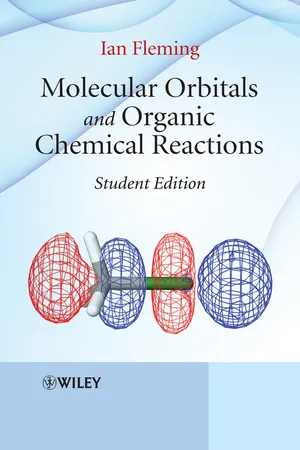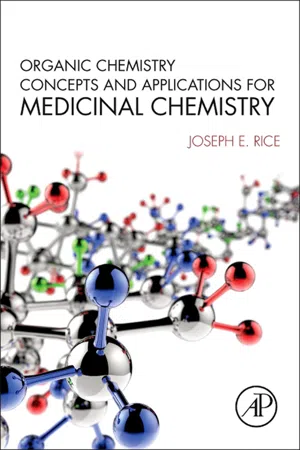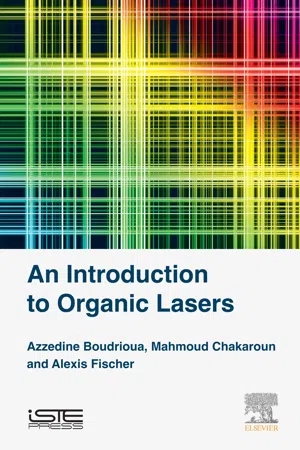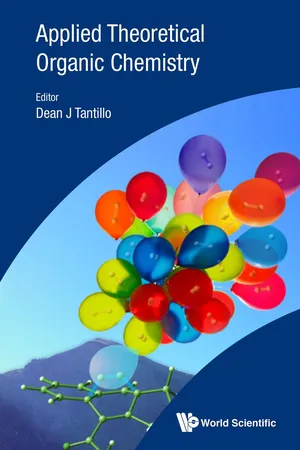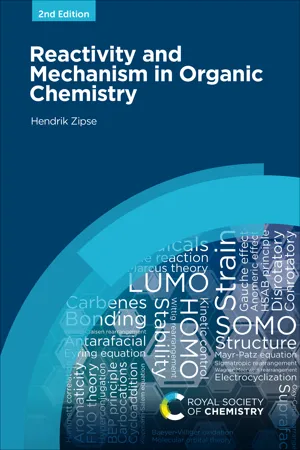Hyperconjugation
Hyperconjugation is a stabilizing interaction in which electrons in a sigma bond are delocalized into an adjacent empty or partially filled p-orbital or a pi bond. This interaction is important in explaining the stability of certain organic compounds and the reactivity of certain chemical reactions.
5 Key excerpts on "Hyperconjugation"
- Ian Fleming(Author)
- 2011(Publication Date)
- Wiley(Publisher)
σ . Yet another term that is used is vertical stabilisation, which is not a misnomer, but is not usefully specific about its nature.2.2.1 C—H and C—C Hyperconjugation 2.2.1.1 Stabilisation of Alkyl Cations.Hyperconjugation is most evident in the stabilisation given to an empty p orbital on carbon by a neighbouring alkyl group, explaining how alkyl substituents stabilise carbocations. Fig. 2.9 shows the interaction of the σ orbitals of the C—H bond on the left with the empty p orbital on the right. The interaction in Fig. 2.9 is similar to that shown in Fig. 1.28 for the allyl cation, except that it is a σ bond instead of a π bond interacting with the empty p orbital. Because the σ CH orbital in Fig. 2.9 is lower in energy than the π orbital in Fig. 1.28 , the hyperconjugative interaction with the empty p orbital is less effective, and the overall drop in energy 2E is less than it was for simple π-conjugation.Fig. 2.9 Interaction of the orbitals of a σ C—H bond with an empty p orbital on carbonAs usual, hybridisation, although a convenient device, is unnecessary—the energy lowering could equally well have been explained using the pz orbital on carbon, with the most significant interaction illustrated on the left in Fig. 2.10 . Indeed, this provides a more simple way to appreciate that the lowest-energy conformation of the cation is not overwhelmingly that in which one of the σ bonds is aligned to overlap with the empty p orbital. Because the two π-type orbitals, πz and πy have the same energy, the interactions in the two conformations shown in Fig. 2.10 are, to a first approximation, equal (E A = E B ). We can expect that the barrier to rotation about the C—C bond of the ethyl cation will be small. Although intuitively reasonable, it is not so easy to set up an interaction diagram using hybridisation to show that the energy-lowering effect of imperfectly lined up overlap of two C—H σ orbitals with the empty p orbital is the same as perfectly lined up overlap of one- Joseph E. Rice(Author)
- 2014(Publication Date)
- Academic Press(Publisher)
Chapter 1Bonding in Organic Compounds
Abstract
This chapter provides a discussion of the concepts related to the formation of the bonds that make up most organic compounds and how they determine the three-dimensional shape and chemical properties of those compounds. It begins with a review of atomic orbitals, showing how for all but the simplest of elements relying on atomic orbitals alone leads to an incorrect picture of chemical bonding. The concept of hybridization is then introduced to provide a more accurate picture of molecular structure. Overlap of hybrid orbitals with other hybrid orbitals or with hydrogen 1s orbitals leads to σ-bond formation. This chapter then goes on to demonstrate how p-orbitals overlap to form π-bonds. Conjugation and resonance are then introduced leading up to a discussion of aromaticity as applied first to carbocyclic and then heterocyclic systems.Keywords
π-bond ; σ-bond ; Aromatic ; Conjugated system ; Electronegativity ; Hybrid orbital ; Orbitals ; Resonance ; Valence-shell electron-pair repulsionBy the time most students in the pharmaceutical sciences get to their third or fourth year, they have very likely already taken general chemistry and organic chemistry and have been exposed to the concepts of chemical bonding several times. The reader is likely asking: Why waste time going over this again when there are more interesting topics to explore? After all, it’s pretty simple. Electrons are shared between two atoms to form bonds. There are single bonds, double bonds, and triple bonds. Can we now move on and get to something new?The truth is that one cannot begin to understand organic chemistry unless he/she has a thorough understanding of the bonds that hold organic compounds together. It is the bonds that determine the three-dimensional shapes of molecules. With many drug molecules, shape is a factor that determines how the drug molecule interacts with its receptor. The bonds in a molecule also determine its chemical reactivity and properties. Again with drug molecules, reactivity relates to its chemical stability and to the types of metabolic transformations the drug may undergo. Bonds affect the acid/base properties of a compound and also affect the solubility. For drugs, the relative solubility in water and lipids affects how the molecule passes from one bodily compartment to another.- eBook - ePub
- Azzedine Boudrioua, Mahmoud Chakaroun, Alexis Fischer(Authors)
- 2017(Publication Date)
- ISTE Press - Elsevier(Publisher)
Lowest Unoccupied Molecular Orbital (LUMO), is part of a π bond, or more specifically, a π* bond, as we shall see in the following few sections.These molecular orbitals, HOMO and LUMO, play a crucially important role in the chemical properties and in the optical and electrical properties of organic semiconductors. To understand this, we need to look at the energy levels of the molecules containing more atoms and hybrid bonds. The energy levels π but also π* must be considered.1.6 Conjugate molecules
The aim of this section is to show how the energy levels of the molecular orbitals evolve when the number of atoms increases or when the length of the molecule increases – i.e. when the number of hybridizations, and therefore of s or p bonds, increases.In chemistry, a set of atoms bonded together by covalent bonds, at least one of which is a delocalized π bond, is called a conjugate system. We say that there is conjugation when a molecule contains an alternating series of single bonds (sp 3 hybridization and thus the presence of an s bond) and double bonds (sp 2 hybridization, and therefore the presence of both s and p bonds) – see Figure 1.15 .To illustrate the influence of the number of bonds on the energy levels, we shall consider the cases of ethylene and benzene, C6 H6 , with six bonds linking six carbon atoms.1.6.1 Ethylene
In the case of ethylene, which served as an illustration for sp 2 hybridization of carbon, the two carbon atoms are therefore linked by an s bond doubled by a p bond which corresponds to the overlap of the 2p z orbitals of each of the carbon atoms. The possibilities of combination of the wave functions ψ1 and ψ2 of each of the carbon atoms 1 and 2 are (ψ1 + ψ2 ) and (ψ1 − ψ2 ), which correspond respectively to the two energy levels π and π*, respectively at the bottom and top of Figure 1.16 - eBook - ePub
- Dean J Tantillo(Author)
- 2018(Publication Date)
- WSPC (EUROPE)(Publisher)
When analyzing the concentration of interactions between bonds of different polarity, one should not forget that simple geometric factors have a large effect on the magnitude of delocalizing interactions. For example, even the neutral C–H/C–H Hyperconjugation can be increased by ~80% in magnitude when the interacting orbitals are separated by the shorter C=C bond of ethene. It is noteworthy that this large change is a consequence of just a 0.2 Å decrease in the distance between two carbon atoms.Figure 15.15.The dependence of Hyperconjugation from the distance between two interacting orbitals in representative hydrocarbons.The dominating role of C–C distance, rather than hybridization, is further illustrated by the comparison of such interaction in 1,3-butadiene where the antiperiplanar C–H bonds at the central atom are separated by a C(sp2 )–C(sp2 ) bond. Although the C–C bond-forming hybrids have the same hybridization as in the C–C bond of ethane, there is only partial double bond order and the C–C distance is longer. As a result, the σC–H → interaction energy lies between that in ethane and ethene (Fig. 15.15 ).15.8.4Directionality of stereoelectronic effects
The above examples provided quantitative insights but for the systems that are relatively simple and intuitively understandable. In the present section, we will provide analysis of less obvious, yet important, effects associated with directionality of stereoelectronic interactions. In order to illustrate this phenomenon, let us compare two similar interactions in ethyl methyl ether: and . The interactions involve the same σ* acceptor that overlaps, at its opposite ends, with two analogous σC–H donors. Despite these similarities, the magnitude of these effects is noticeably different: acceptor ability of the bridge bond increased by 38% (from 3.2 to 4.4 kcal/mol) at the carbon end relative to the oxygen end (Fig. 15.16 ).NBO analysis readily answers why C–O bonds are ~40% better acceptors than O–C bonds in interactions (X, Y=O, C) in ethers. The origin of this directionality lies in polarization of orbital.24 Due to the greater electronegativity of carbon, the carbon end of the orbital has the larger orbital coefficient, leading to a larger Fi,jterm for the σC–H → - eBook - ePub
- Hendrik Zipse(Author)
- 2022(Publication Date)
- Royal Society of Chemistry(Publisher)
1 Structure and Bonding in Organic MoleculesIn Chapter 1 we develop qualitative molecular orbital theory as a tool for the description of bonding phenomena. This includes selected examples of acyclic and cyclic hydrocarbons, and also illustrates the effects of including electronegative heteroatoms, such as oxygen or nitrogen. In the section of the chapter on hyperconjugative interactions we employ this toolset to explore the stability of common transient intermediates, such as carbocations and radicals, followed by an analysis of anomeric effects, gauche effects and conformational barriers in alkanes. The stability of organic molecules is subsequently discussed within the framework of the Benson group increment method, which also provides a basis for quantifying molecular strain energies or the aromaticity of cyclic molecular systems.
1.1 Atomic Orbitals as Building Blocks
Bonding phenomena in organic molecules are often described in terms of valence bond (VB) or molecular orbital (MO) theory. Valence bond theory is based on localized electronic configurations (VB configurations), in which valence electrons occupy defined positions in the overall system. Combination of several of these configurations yields valence bond states, which define the ground and excited state properties of the system. The qualitative description of VB configurations through Lewis structures is the primary tool used in organic chemistry for the description of organic molecules. One of the weak areas of VB theory concerns molecules with extended π-systems, and this is also where MO theory has particular strengths. The basic tenet of MO theory is that the overall wavefunction of the system can be described by a product of one-electron functions called orbitals. While quantitative (or ab initio ) versions of MO theory are highly successful in describing (and thus predicting) the properties of organic molecules, the focus here is on the qualitative application of MO theory by using atomic orbitals (AOs ) as building blocks for the construction of MOs. This approach is often termed linear combination of atomic orbitals (LCAO) and is easily understood with respect to the atomic orbitals of the carbon atom in its electronic ground state (Figure 1.1 ).Figure 1.1 Atomic orbitals of the carbon atom in its electronic ground state.We concentrate on the valence space orbitals here and thus neglect the (energetically low lying) 1s atomic orbital holding another two electrons. The schematic description in Figure 1.1
